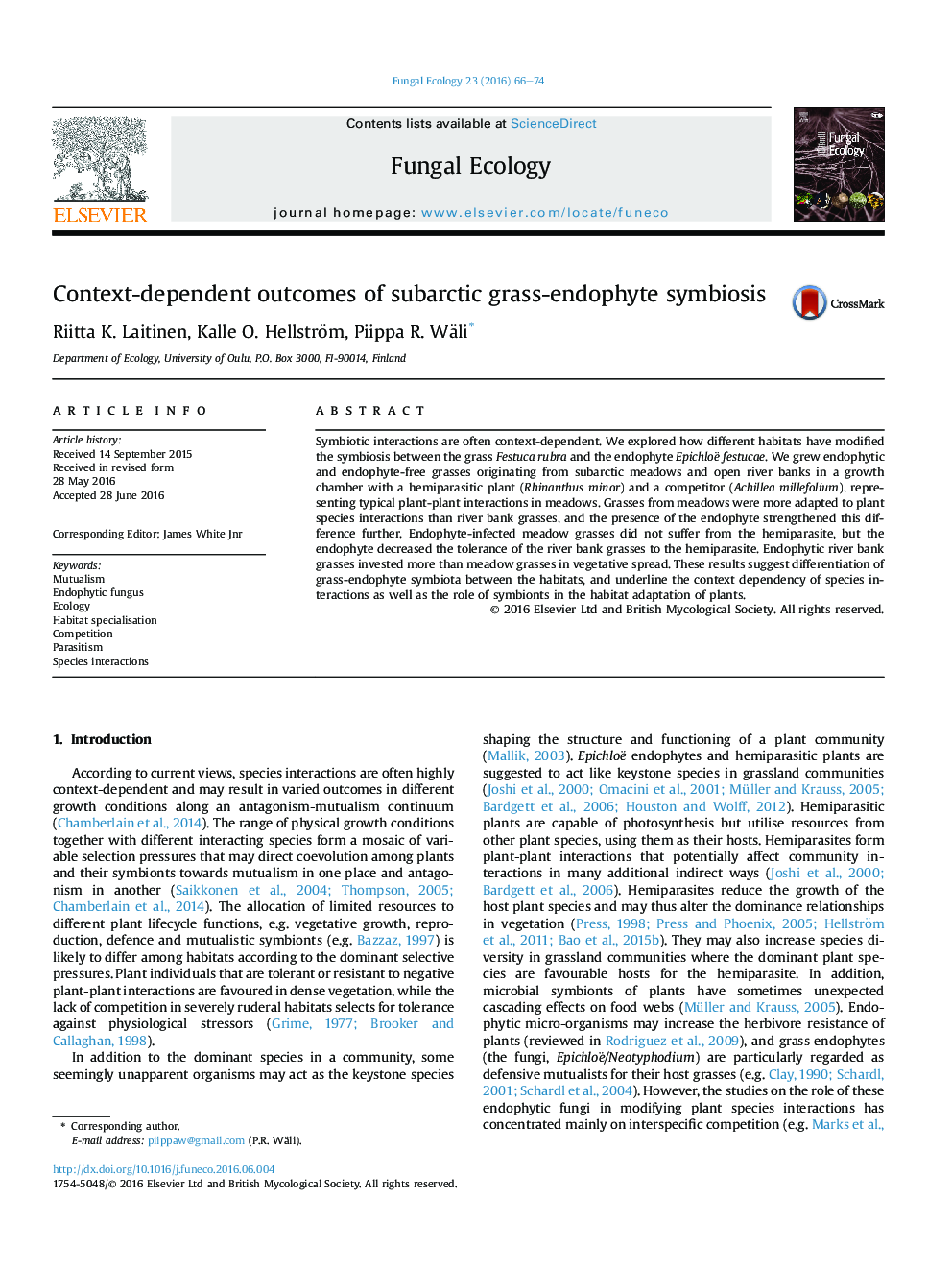| Article ID | Journal | Published Year | Pages | File Type |
|---|---|---|---|---|
| 8384315 | Fungal Ecology | 2016 | 9 Pages |
Abstract
Symbiotic interactions are often context-dependent. We explored how different habitats have modified the symbiosis between the grass Festuca rubra and the endophyte Epichloë festucae. We grew endophytic and endophyte-free grasses originating from subarctic meadows and open river banks in a growth chamber with a hemiparasitic plant (Rhinanthus minor) and a competitor (Achillea millefolium), representing typical plant-plant interactions in meadows. Grasses from meadows were more adapted to plant species interactions than river bank grasses, and the presence of the endophyte strengthened this difference further. Endophyte-infected meadow grasses did not suffer from the hemiparasite, but the endophyte decreased the tolerance of the river bank grasses to the hemiparasite. Endophytic river bank grasses invested more than meadow grasses in vegetative spread. These results suggest differentiation of grass-endophyte symbiota between the habitats, and underline the context dependency of species interactions as well as the role of symbionts in the habitat adaptation of plants.
Related Topics
Life Sciences
Agricultural and Biological Sciences
Ecology, Evolution, Behavior and Systematics
Authors
Riitta K. Laitinen, Kalle O. Hellström, Piippa R. Wäli,
